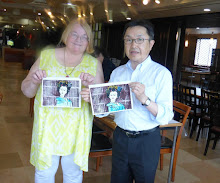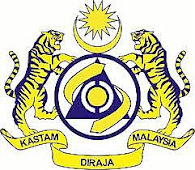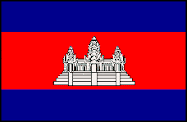History
Banteay Srei means "Citadel of the Woman", but the local people call it the Lady Temple. Built in the 10th century, the temple of Banteay Srei is renowned for its beautiful and intricate decorative carvings in pinkish sandstone which gives the walls the appearance of a tapestry.
Completed and dedicated in 967, Banteay Srei was the only major temple at Angkor not built by a king - it was constructed by one of king Rajendravarman's counsellors, Yajnyavahara, who it is said was a scholar and philanthropist.
Former name
Originally, the temple was called Tribhuvanamahesvara — great lord of the threefold world named after the central image, in this instance a Shaivite linga. Centered around the temple was the town of Isvarapura. The modern name, Banteay Srei — "citadel of the women" or "citadel of beauty" — is thought to refer to the intricacy of the carving and the tiny dimensions of the architecture.
A feeling of peace
As I walked towards the temple, I was struck with awe at such beauty. Stepping over the bricks and entereing the first arch, I placed my left hand on the cool sandstone. As I stood there with my hand on the brick, I felt a feeling of peace come over me. My cares seemed to disappear and I felt one with the universe. I no longer felt hot and bothered, the heat didn't worry me and there was an equilibrium and serenity in me. Inhaling deep breaths, I just stood there, for how long I do not know. A lady passed by me but still I stood. After some time I withdrew my hand and slowly made my way further inside.
Above: Carved arch
The carvings are so delicate, it was said it could not have been carved by men - only a woman would create something so dainty. Banteay Srei is built of hard red sandstone, laterite and brick were only used for the enclosure walls and some structural elements. The temple is known for the beauty of its sandstone lintels and pediments.
Pediments and lintels
A lintel is a horizontal beam across the gap between two posts. Some lintels are structural supporting the weight of the superstructure, while others are purely for decoprative purposes. The lintels at Banteay Srei are beautifully and intricately carved.
A pediment is the triangular space above a rectangular doorway or opening. The pediments at Banteay Srei, are fairly large compared to the size of the doorways and have a sweeping gabled shape. Whole scenes of mythological subject-matter are depicted on these pediments, this was the first time in Khmer architecture that it had been done.
Above: Temple
On the pediment, Shiva Nataraja is depicted on the eastern gopura of the inner enclosure wall. Between the gopuras on the collapsed inner wall are the buildings of the inner enclosure: a library in the south-east corner and another in the north-east corner, and in the centre the sanctuary set on a T-shaped platform 0.9 m high. Besides being the most extravagantly decorated parts of the temple, these have also been the most successfully restored, this is in part due to the durability of the sandstone and the small scale.
Above: Guarding the temple
Within the inner enclosure, there are three sanctuary towers. The central sanctuary is slightly taller that the other two, and is linked to a mandapa (ante-chamber). Both the north and central sanctuary are dedicated to Shiva while the south sanctuary is dedicated to Vishnu. Different guardian figures, usually of a human body with an animal head such as the lion, garuda or monkey, protect each of these sanctuaries
Above: Hanuman
On the right - monkey-headed statues guarding the antechamber of the central sanctuary.
The monkey is Hanuman, the king of the forest dwellers (monkeys) and an important figure in the Hindu epic the Ramayana.
The legend is about the kidnapping of Sita, by the evil king of Lanka (sri Lanka) and subsequent war to rescue her. Its the original story of good defeating evil. Every Hindu knows this saga, and its a great piece of literature. This story is told in bass relief at Angkor wat. Buddhism is an offshoot of Hinduism and many deities are still revered and displayed.
Above: Spindled windows
Above: Carving of a kala and Siva
A kala is a mythical creature representative of time and of the god Siva. Through the openings, you can see the inner courtyard.
Above: Burning of Khandava Forest
Khandava Forest was an ancient forest to the west of Yamuna river. Arjuna and Vasudeva Krishna cleared this forest by setting up a fire.
Above Floor plan of Banteay Srei
Malaysia Time
Click On Your Flag To Translate
Malaysia and Cambodia
Hello,
This is about my upcoming trip to Malaysia and Cambodia. The first part is pre-trip - information about flights, itineraries, accommodation and all the things that you need to do to plan an overseas holiday. This is my first trip to Asia and I hope it may help others. Comments are very welcome and anyone who has travelled to Malaysia and/or Cambodia, please feel free to comment and offer any advice or tips that you think would be helpful. As of today ( 28th February) , in exactly 11 days (minus 30 minutes) I will be in Kuala Lumpur.
Cheers.
I had the most amazing time and hope you enjoy reading about my trip. Each post is numbered and I'm doing them in order from start to finish - a little like a diary.
ANGKOR WAT SUNRISE
This is about my upcoming trip to Malaysia and Cambodia. The first part is pre-trip - information about flights, itineraries, accommodation and all the things that you need to do to plan an overseas holiday. This is my first trip to Asia and I hope it may help others. Comments are very welcome and anyone who has travelled to Malaysia and/or Cambodia, please feel free to comment and offer any advice or tips that you think would be helpful. As of today ( 28th February) , in exactly 11 days (minus 30 minutes) I will be in Kuala Lumpur.
Cheers.
I had the most amazing time and hope you enjoy reading about my trip. Each post is numbered and I'm doing them in order from start to finish - a little like a diary.
Sunday
Subscribe to:
Post Comments (Atom)




















No comments:
Post a Comment